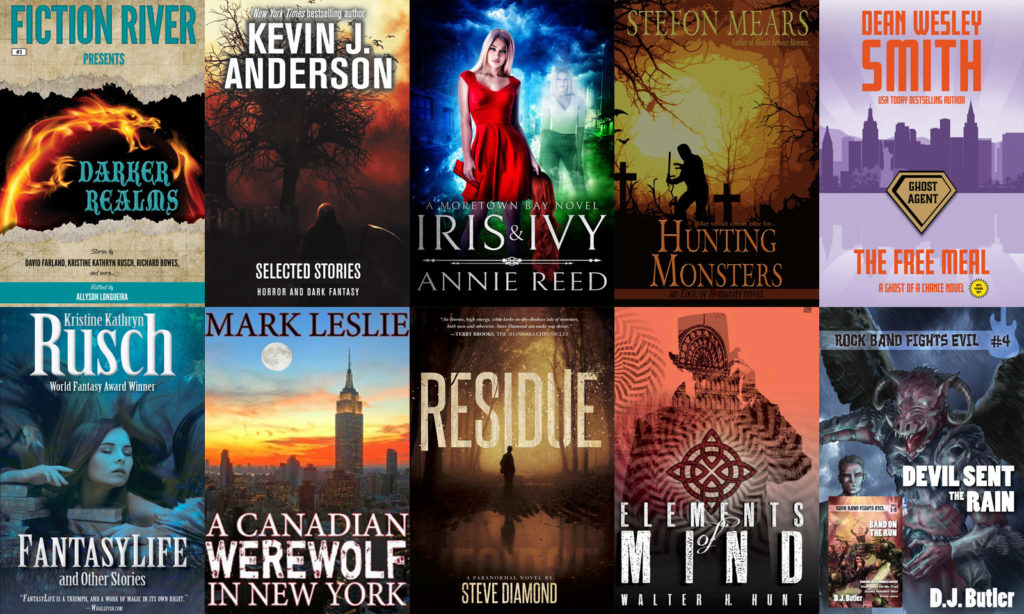Vampires and Monsters
Ah, vampires.
I remember it wasn’t long after Buffy the Vampire Slayer was in its … third season or so that people declared the vampire story dead.
Even apart from the obvious irony, that’s really pretty funny to think about. I mean, since then, we’ve had Twilight and The Vampire Diaries, and those are just two of the biggest series, in terms of sales.* (Not to mention their movies and television shows, respectively.)
In fact, vampires have become so prevalent in urban fantasy that an acquaintance of mine recently asked on Facebook for recommendations of new vampire stories to read.
The last time I counted, that thread had more than twenty suggestions. And let’s be honest, that doesn’t even scratch the surface of vampire fiction these days.
Heck, I just picked up all four volumes of a vampire series by an author named David Wellington, when I found them in a thrift store the other day.
(Full disclosure – I was actually there hunting for obscure horror movie DVDs, as I do from time to time. More about that in another post though.)
The reason I bought those novels? I mean, apart from lucking into finding a complete series?
The vampires looked like monsters. Not heroes. Not misunderstood anti-heroes. Not antagonists with valid points of view. Monsters.
Don’t get me wrong. I love vampires.
I have no problem with them being anti-heroes, protagonists, interesting antagonists, complex characters and all of that.
But I grew up reading vampire folklore, not vampire fiction. Used to have an attitude about it too, when I was young. I’d say obnoxious things like, “Don’t talk to me about The Vampire Lestat. Talk to me about the vampire of Croglin Grange.”
Anyway, one of the downsides to the current popularity of vampires is that people have forgotten most of the old folklore. Even modern nonfiction books about vampires seem more interested in covering fiction than folklore.
Part of that, I think, is that in folklore the vampire is a monster. It cannot be reasoned with. It does not lament its fate.
It can be avoided. It can be held at bay. It can be slain. Those are pretty much the three options.
But there’s a problem.
How?
How can you avoid it? Hold it at bay? Slay it?
The answer to those questions lies in understanding what kind of vampire it is. The folklore of vampires varied from place to place, and sometimes pretty widely. Some vampires were vulnerable to the sun. Others to communion wafers or holy water. Others to stakes of wood, driven through the heart.
If the wood is the right kind. Because depending on where in Europe you get the story, it might be ash, or white hawthorn, or black hawthorn, or something else entirely.
But these details, they’ve been lost along the way.
Hammer studios showed us that if a cross will ward off a vampire, then two crossed candlesticks can have the same effect. It was the shape that mattered.
One film (whose title escapes my mind just now) even allowed a vampire to be killed by a pencil through the heart. Because, I assume, the pencil is at least mostly wood (and apparently the graphite doesn’t matter).
Some of this has come down to authorial license in storytelling, and goodness knows, I take my own liberties with such things.
But some of the reason behind this modern streamlining comes from the focused scrutiny of science.**
Sunlight can destroy a vampire? But torchlight or the light of an incandescent or fluorescent bulb does not? Well, then the cause must be the ultraviolet radiation.
Vampires cast no shadow, nor any reflection in a mirror? Ridiculous. Light behaves the same way for the living and the dead.
And so on.***
These ideas have crept into vampire fiction at an impressive rate. There’s only one problem with them: they show no respect to folklore.
If people say scattering mustard seeds may distract a vampire, maybe there’s a reason it’s mustard seeds and not flax seeds.
And if a vampire is said to cast no shadow, maybe it’s because the natural world rejects the vampire’s unnaturalness. Which would go hand in hand with the fact that some are said to be unable to cross running water.
This is the kind of thinking that led to my novel Hunting Monsters. I took a reality show ghost hunting crew and pitted them and their high-tech, fancy weapons against a vampire.
It goes badly for them. And that’s just the beginning.
If you’d like to check the novel out, it’s part of a Dark Fantasy Storybundle right now. Ten books for one low bargain price, and great reading as we head toward Halloween.
Oh, and I should point out that Hunting Monsters is one of my Edge of Humanity books. These are standalone novels featuring different characters, bound together by one concept – it’s tough being a human in a world where monsters are real, and magic isn’t a good thing.
*I confess, I haven’t read or watched either. If you feel I should, please say something in the comments section.
**I admit, the thought of a physicist spending time trying to analyze the workings of the undead amuses me.
***Don’t even get me started on that mathematical “analysis” that shows up every year or so around Halloween that “proves” vampires don’t exist based on an assumed rate at which vampirism would spread, if real. I’m not saying vampires are real. I’m saying that analysis is half-assed and based on “givens” that bear no relationship to any vampire fiction or folklore I know of.


